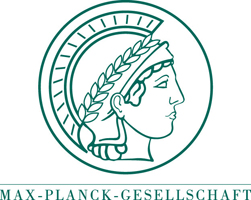|
News
About
Genome Browser
BLAST
Sequences
Resources
Protocols
Connectomics
People
|
Introduction
Over the three decades, we have developed the nematode Pristionchus pacificus as a model system in evolutionary developmental biology (evo-devo), evolutionary ecology and population genetics. P.
pacificus is a self-fertilizing hermaphrodite, feeds on E. coli and has a four day generation time at 20°C under laboratory conditions. P. pacificus has six chromosomes, generates
males under stress conditions and can be frozen using standard nematode protocols. NIH has sequenced the P. pacificus genome in 2006. Finally, we established DNA-mediated transformation, making P.
pacificus a well-rounded laboratory model system in developmental genetics and evo-devo.
Since 2004, we have started to complement our research activities in developmental genetics and evo-devo with a new program on evolutionary ecology and population genetics.
Our long-term vision is an integrative approach to evolutionary biology that combines evo-devo, population genetics and ecology by carrying out parallel investigations of macro-evolutionary and
micro-evolutionary processes in the same organism (Sommer, Nat. Rev. Genet. 10:416, 2009). P. pacificus is uniquely suited for such studies because it allows laboratory studies to be coupled
with field work. In a series of studies since 2004 we have shown that P. pacificus lives in the wild in close association with scarab beetles. We have i) described the Pristionchus-beetle
interaction, ii) placed these interactions in a phylogenetic context, iii) started to investigate developmental and neurobiological processes that are of ecological relevance, such as olfaction, dauer
larva formation, bacterial interactions and iv) started to investigate developmental and ecological processes underlying the formation of evolutionary novelties.
P. pacificus is a cosmopolitan nematode with ample of natural variation for many traits. We found the island of La Réunion in the Indian Ocean to cover a genetic diversity of
P. pacificus that represents the known diversity from all over the world. This observation is based on the fact that P. pacificus has invaded the island several times independently using
different scarab beetles as host. We can treat La Réunion as a microcosm representing the rest of the world and for that, have a small Station on La Réunion sponsored by the Max-Planck
Society. Currently, we have more than 400 P. pacificus strains in the lab.
Our integrative approach aims for interdisciplinary studies on evo-devo, evolutionary ecology and population genetics. We are using the advancement of Next Generation Sequencing for P. pacificus
Ecological Genomics and study the population structure and population dynamics of the P. pacificus Genome on La Réunion.
|



